Alexander Ioannidis
A deep learning classifier for local ancestry inference
Nov 04, 2020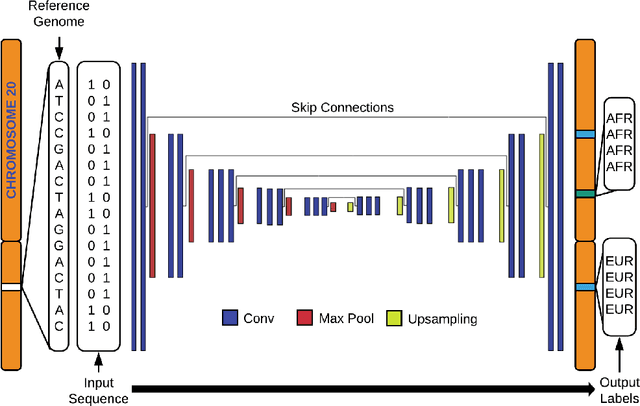

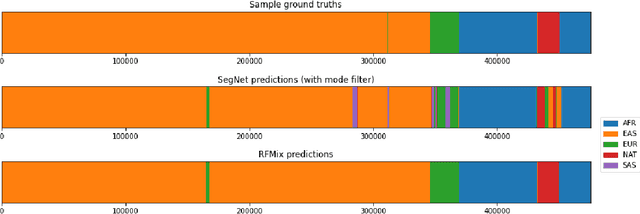
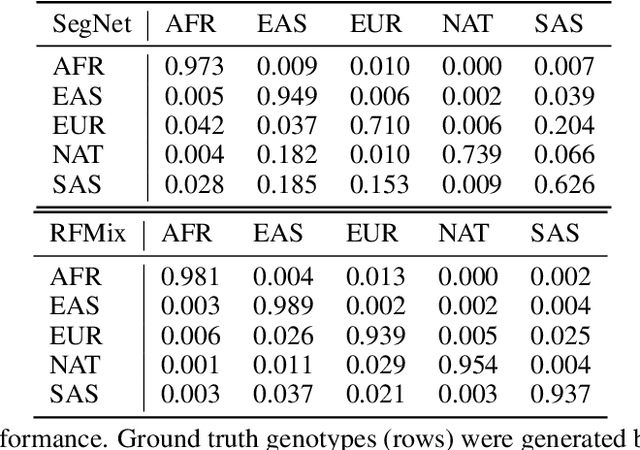
Abstract:Local ancestry inference (LAI) identifies the ancestry of each segment of an individual's genome and is an important step in medical and population genetic studies of diverse cohorts. Several techniques have been used for LAI, including Hidden Markov Models and Random Forests. Here, we formulate the LAI task as an image segmentation problem and develop a new LAI tool using a deep convolutional neural network with an encoder-decoder architecture. We train our model using complete genome sequences from 982 unadmixed individuals from each of five continental ancestry groups, and we evaluate it using simulated admixed data derived from an additional 279 individuals selected from the same populations. We show that our model is able to learn admixture as a zero-shot task, yielding ancestry assignments that are nearly as accurate as those from the existing gold standard tool, RFMix.
Class-Conditional VAE-GAN for Local-Ancestry Simulation
Nov 27, 2019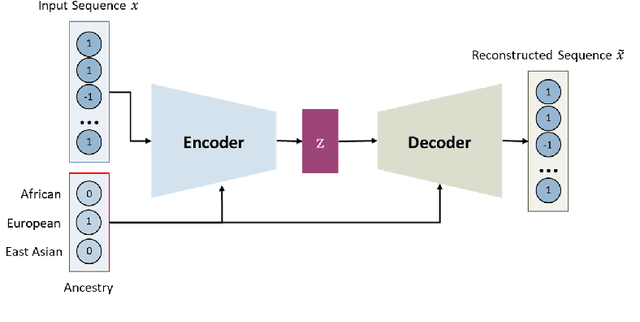

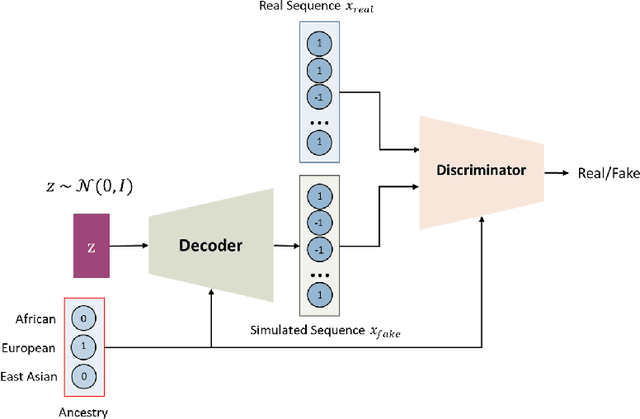
Abstract:Local ancestry inference (LAI) allows identification of the ancestry of all chromosomal segments in admixed individuals, and it is a critical step in the analysis of human genomes with applications from pharmacogenomics and precision medicine to genome-wide association studies. In recent years, many LAI techniques have been developed in both industry and academic research. However, these methods require large training data sets of human genomic sequences from the ancestries of interest. Such reference data sets are usually limited, proprietary, protected by privacy restrictions, or otherwise not accessible to the public. Techniques to generate training samples that resemble real haploid sequences from ancestries of interest can be useful tools in such scenarios, since a generalized model can often be shared, but the unique human sample sequences cannot. In this work we present a class-conditional VAE-GAN to generate new human genomic sequences that can be used to train local ancestry inference (LAI) algorithms. We evaluate the quality of our generated data by comparing the performance of a state-of-the-art LAI method when trained with generated versus real data.
 Add to Chrome
Add to Chrome Add to Firefox
Add to Firefox Add to Edge
Add to Edge